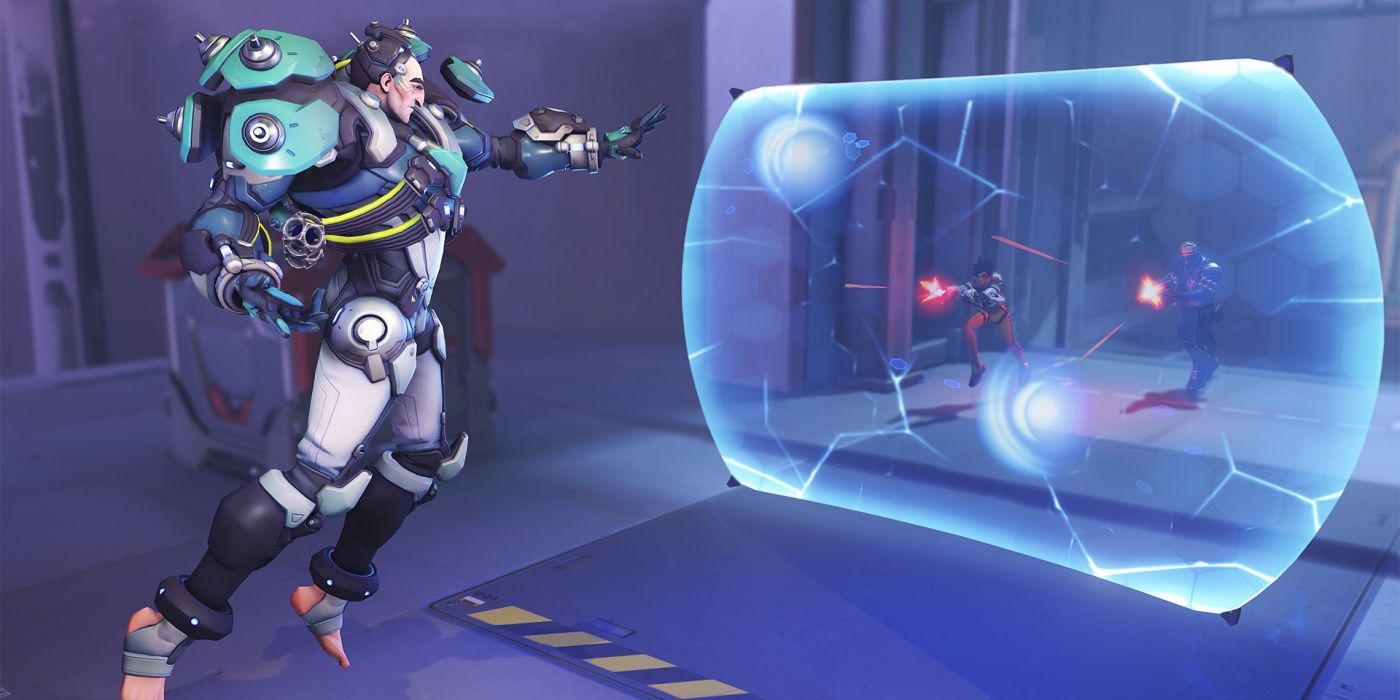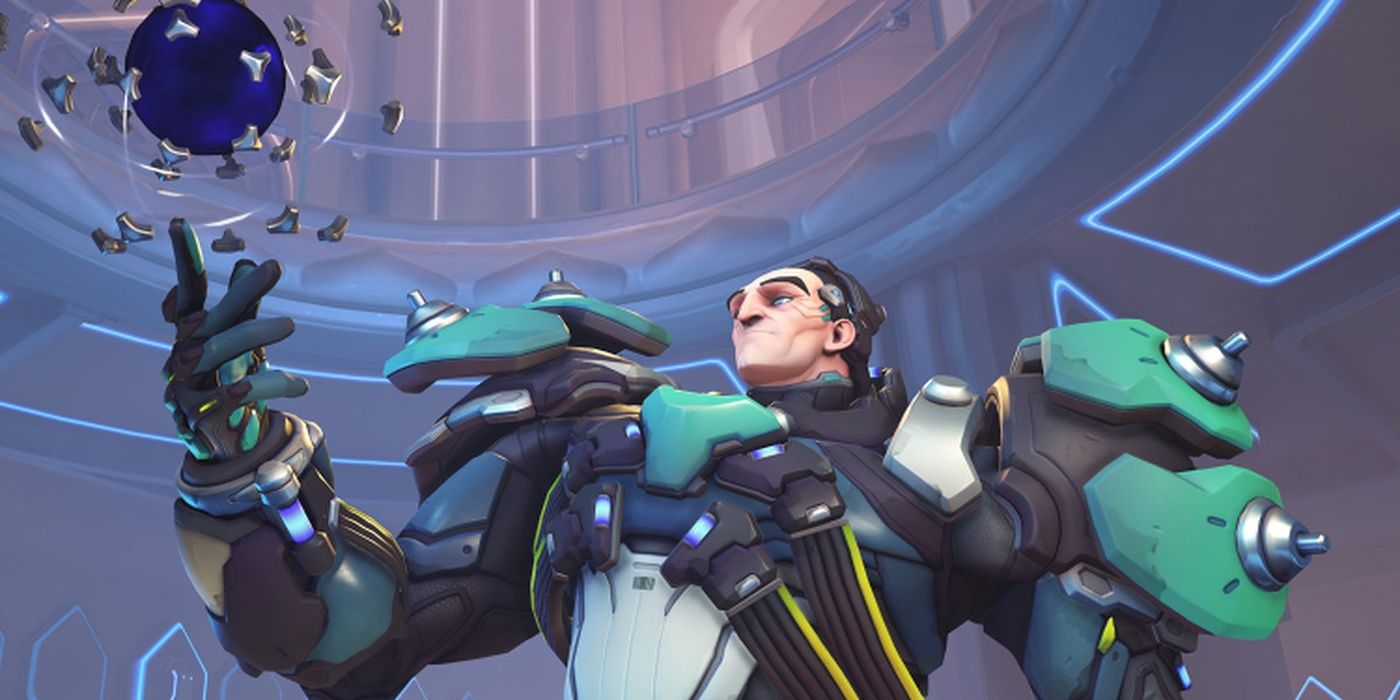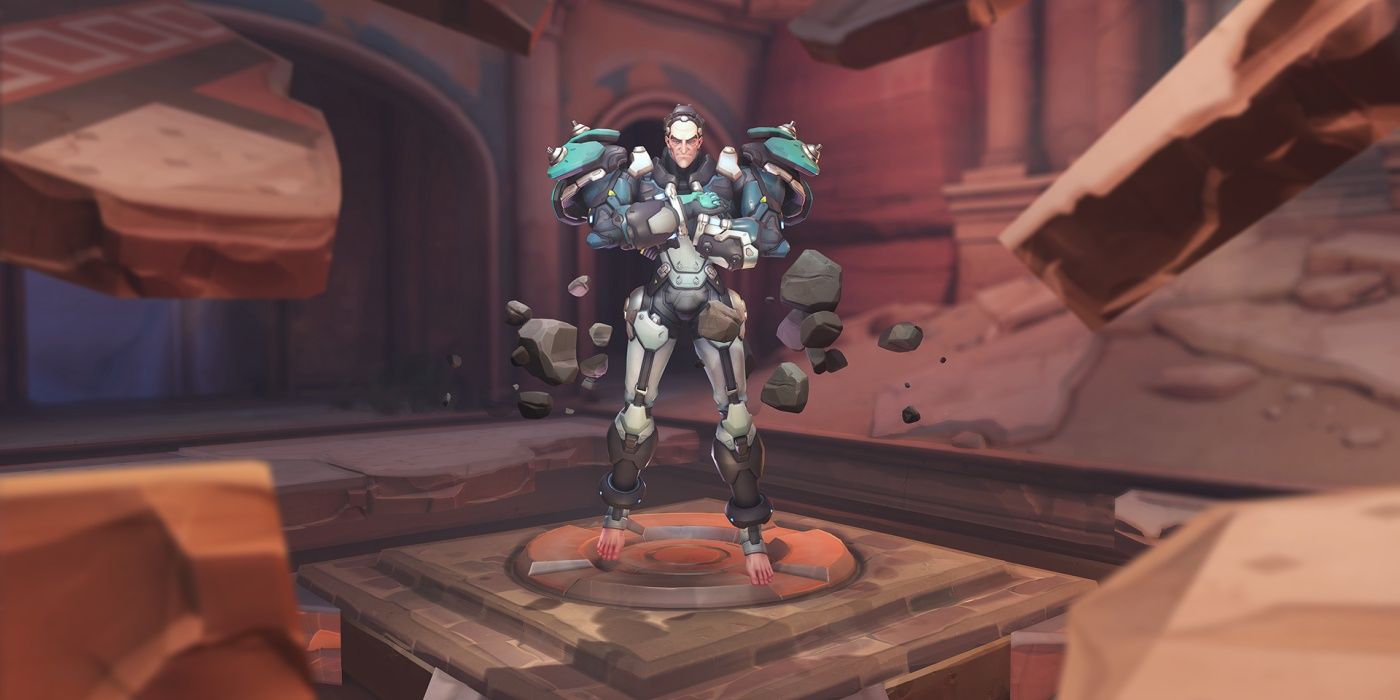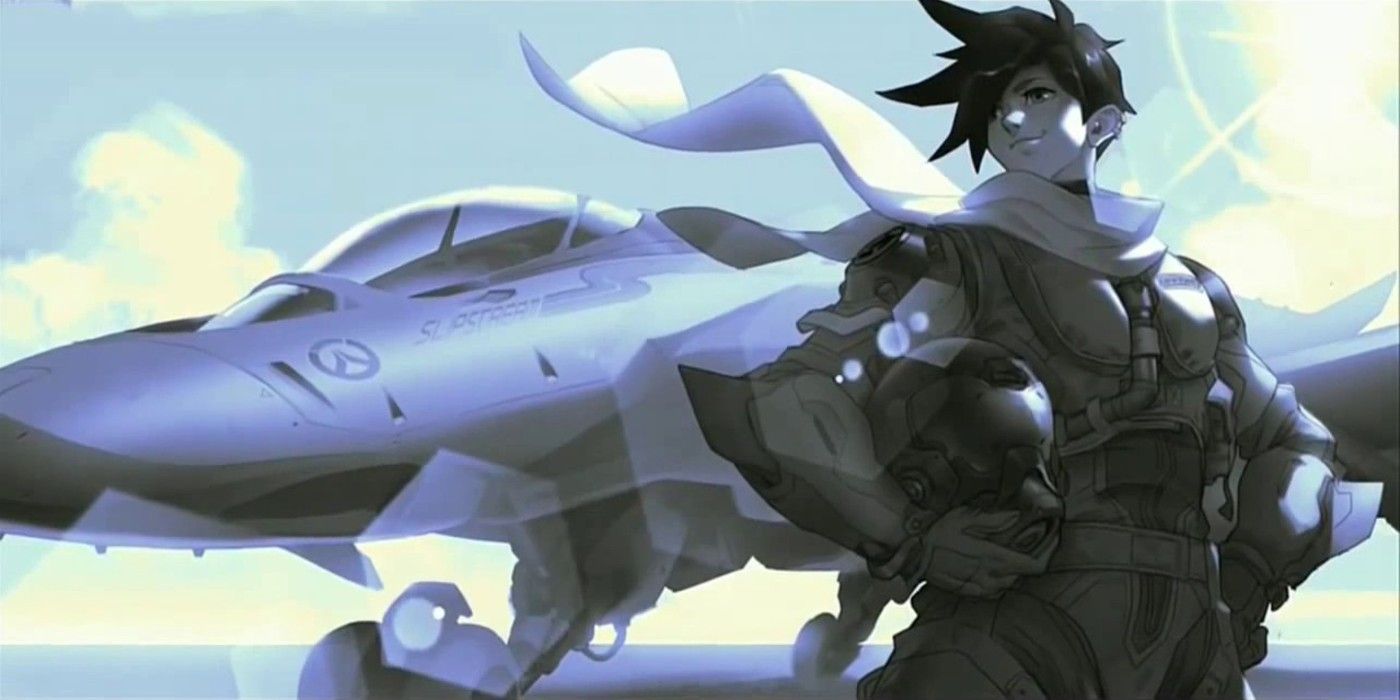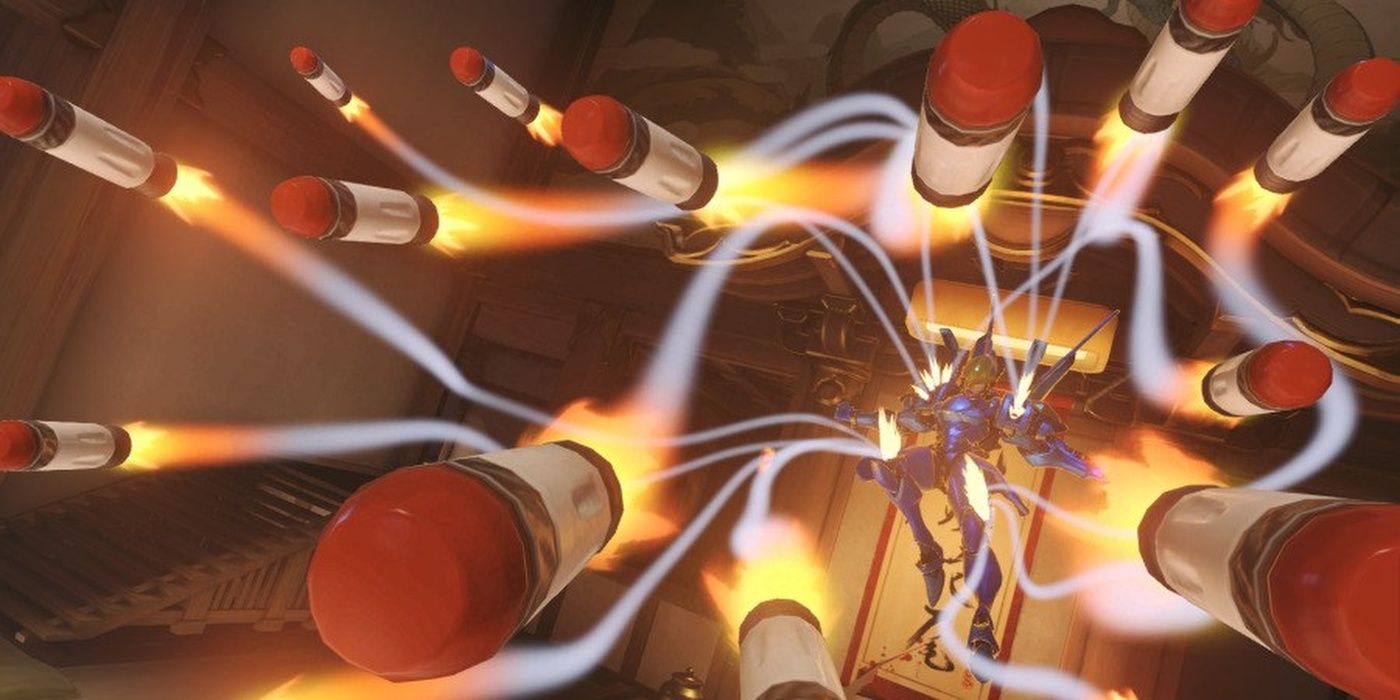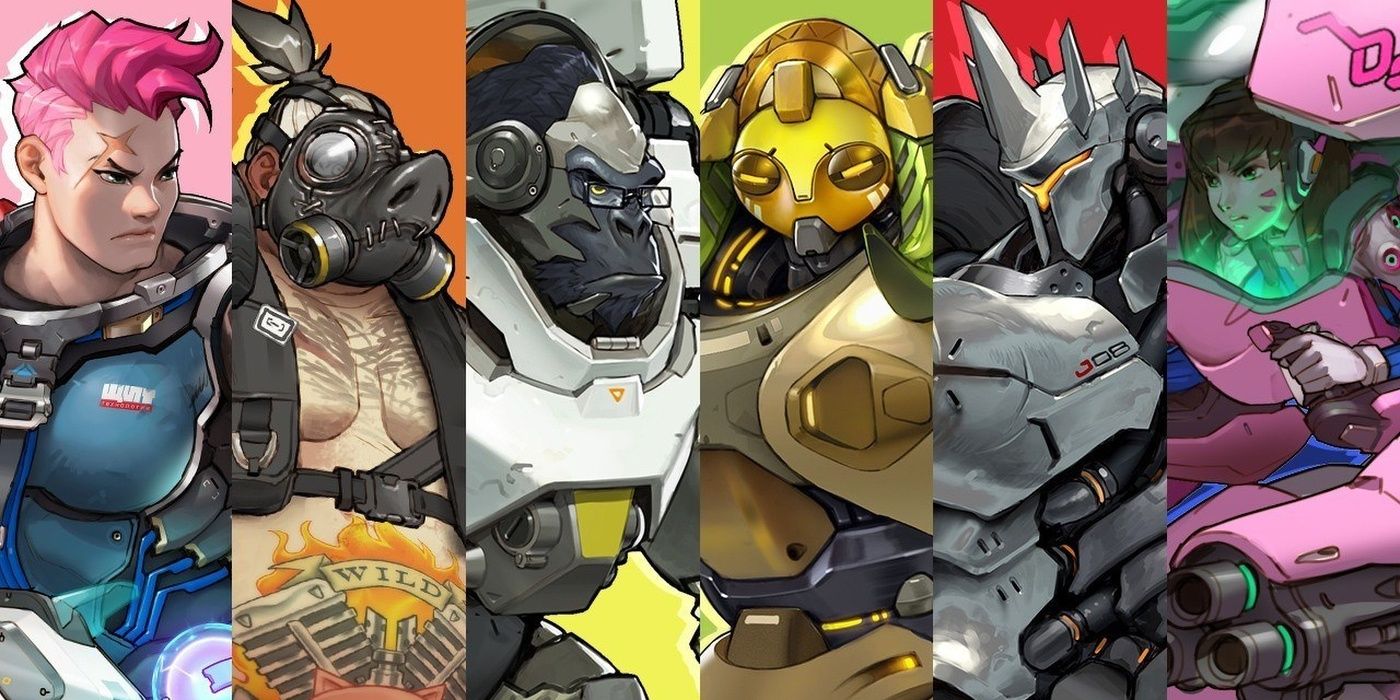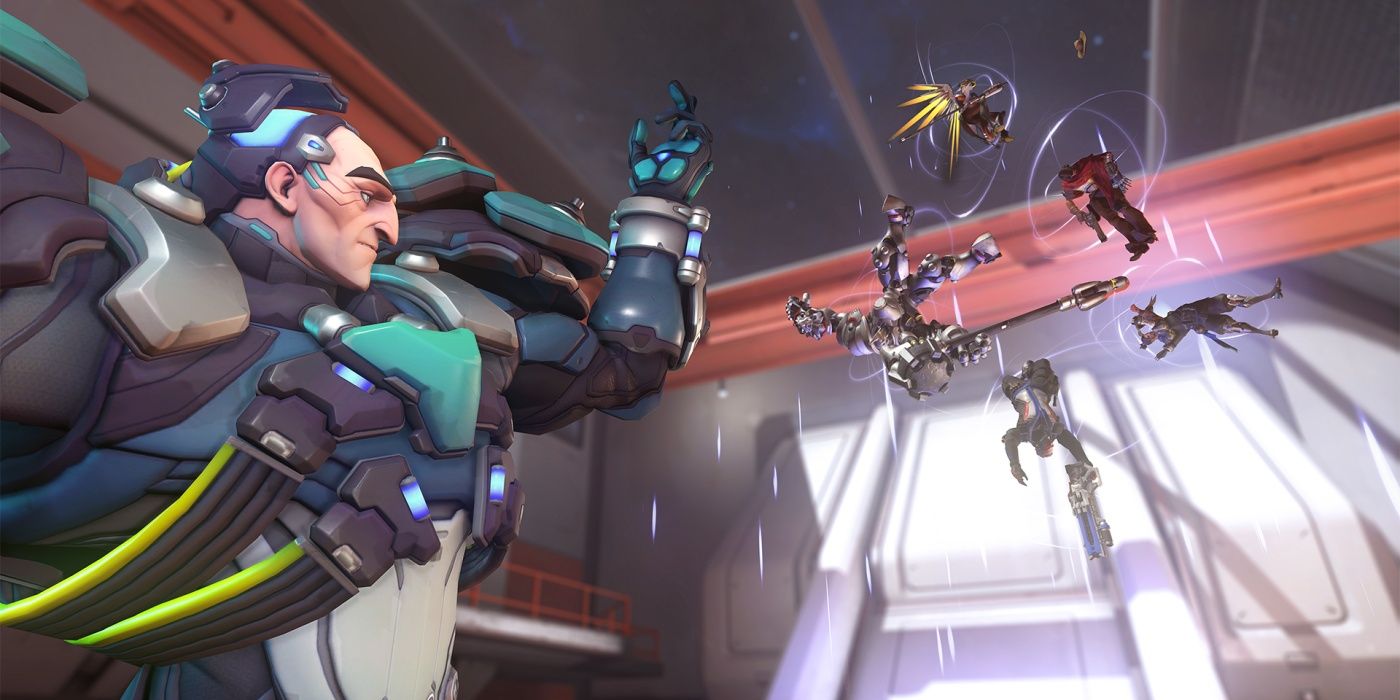After much debate and speculation, Overwatch has finally released Hero 31 into the either - Sigma! Some players feel that his unorthodox moveset has the potential to reshape the metagame. Others, however, believe that Sigma will get left behind in the future - and that much of the fuss regarding him stems from new release hype.
In the end, time will ultimately tell us whether or not Sigma's a gamechanger or a fad. However, that won't stop us from trying to beat Father Time to the punch! We're going to weigh five of Sigma's pros against his cons, then give our verdict on this divisive mad scientist's long-term viability.
10 Con: His Primary Fire Hurts Himself
Sigma isn't the only Hero who can potentially kill themselves with their own attacks - Symmetra and Zarya's alt-fires can be hazardous tools in the wrong circumstances. But here's the thing; Symmetra and Zayra also have safer primary attacks in close-quarters encounters. Sigman, on the other hand, is stuck lobbing his hyperspheres and hoping that his enemies die first.
Pharah is another Hero with only one firing mode that can be potentially hazardous to herself. But Pharah's whole gameplan is to stay far out of enemy range. Conversely, Sigma's too slow and immobile to fight at long range; he excels at medium to close range. Should Roadhog or D.Va get in Sigma's face at the wrong time, he could kill himself before they get the chance to finish the job.
9 Pro: Those Hyperspheres Pack A Punch!
On the flip of the coin, Sigma's Hyperspheres do a ton of damage - 60 points on a direct hit and around 11 to 35 with splash damage! Most Damage heroes only have around 150 to 200 health points, sans any buffs from Brigitte or Lucio. That means Sigma can shave off about 60 to 80% of a Damager Hero's health pool in one burst!
Sigma's Hyperspheres also recharge at a lightning-fast rate - about 1.5 seconds, to be exact. Add on the fact that those Hyperspheres can ricochet, as well as slightly pull targets inward, and you've got a very effective - if somewhat circumstantial - primary attack.
8 Con: Accretion Has A Massive Cooldown
Accretion is meant to get aggressors off of Sigma's back. Don't let the fancy name fool you, Sigma simply clumps up a bunch of rocks and then flings them at his opponents. Should Accretion connect, Sigma can stun his target for varying amounts of time. The further away an enemy is, the longer Accretion's stun will be.
The caveat is that this move has an insanely long cooldown period of ten seconds! Good old Damage-Fist's entire kit could recharge in that hefty ten-second window - rending Sigma a sitting, mentally unstable duck. Moreover, Damage heroes that can easily get in close like Tracer, Genji, or Reaper won't stay down for long.
7 Pro: Experimental Barriers Aren't Static
Another powerful too in Sigma's kit is his Experimental Barrier. With the press of a button, Sigma can lay down a sizeable shield that blocks incoming enemy projectiles. That concept isn't new in and of itself, but the ability to reposition Sigma's shields is. If you continue to hold down EB's casting key, the barriers will continue to move forward until you release it.
Moreover, Sigma can quickly recall Experimental Barrier to him - allowing him to psyche foes out to a degree. Some of the best abilities in Overwatch are the ones with tons of versatility. Sigma players can continually reposition their shields to suit their team's needs - until Experimental Barrier breaks, that is.
6 Con: Said Barriers Are Highly Susceptible To Flanking
Unfortunately, one of Experimental Barrier's greatest weaknesses is its shape. This point probably sounds a bit silly, but look at the structure of Sigma's shields - they're rectangular and flat. In comparison, every other Tank with a shield uses a cone-shaped or spherical barrier. Even Reinhardt's shield has a slight curve to it!
Experimental Barrier's flat design makes it easy for flankers like Tracer, Reaper, or Damage-Fist to sneak hits in from the side. It'll also be harder to block an incoming D.Va ultimate with a shield that's flat a paper and relatively small in size. Experimental Barriers also aren't very good and defending allies in large, open areas either.
5 Pro: Kinetic Grasp Absorbs Certain Ultimates
Sigma doesn't have to solely rely on Experimental Barrier to block certain ultimates, however. Kinetic Grasp allows Hero 31 to absorb incoming enemy projectiles then convert the damage and add it to his shield. What makes this ability so powerful is that Sigma can absorb some of the most damaging ultimates currently in the game!
Thus far, we know that Sigma can absorb Deadeye, Barrage, Graviton Surge, Pulse Bombs, Blizzard, Whole Hog, and Dragonstrike! This cheeky Talon scientist also has unique lines of dialogue that he spews out when absorbing certain moves. Kinetic Grasp allows Sigma to hold his ground for 2 seconds - which is often the difference between victory and defeat in a game like Overwatch.
4 Con: He Needs Another Tank To Do His Best
Despite the versatility of his kit and nuance of his abilities, Sigma simply can't Tank on his own. Techniques like Experimental Barrier and Kinetic Grasp are great for protecting Sigma and one or two allies, but they can't shield the entire team from harm in a full-scale engagement.
Sigma also isn't the best character to use for 'body blocking' - a technique that consists of Tanks using their bodies to personally shield allies from harm. Characters with large frames like Roadhog, Reinhardt, and D.Va often body block to protect squishy Supports or Damage Heroes who are about to pop an ult. Sigma, however, won't be able to body block as effectively as his contemporaries.
3 Pro: Sigma Doesn't Make A Sound When Moving
On the other end of the spectrum, Sigma is probably the stealthiest Tank in the game. Just like Zenyzatta, Sigma floats above the ground - meaning that he doesn't make any noise while moving. It's certainly possible to break off from the main group, hide in a corner, and then sneak up behind the enemy team - provided that your team can compensate for your brief absence.
No footsteps also mean that Sigma can retreat without calling attention to himself. Overwatch purposefully raises the sound of enemy footsteps as a way of alerting players to incoming threats. Sigma doesn't have to worry about that, however, as he can slink off in the middle of a battle like Solid Snake.
2 Con: He Buckles Under Pressure
Of course, it's typically a bad sign when the Tanks start turning tail in the middle of a fight; this implies that the enemy team's managed to break your team's rank and is on the verge of compromising your formation! Focusing down one character at a time is one of the best ways to break rank - a tactic that Sigma doesn't do well against.
Simply put, Sigma doesn't fare well against aggressive characters that can get in his face. Which is supposed to happen a lot, considering that he's a medium-to-close range Tank. Combined with his low mobility, Sigma can quickly collapse under Tracer, Genji, Reaper, and Damage Fist's pressure. Even an aggressive Mei can easily put Sigma on ice!
1 Pro: Gravitic Flux Can End Overtime
Sigma's ult more than makes up for many of his cons; Gravitic Flux hoists victims into the air, exposing them to incoming fire and removing them from certain AOE heals and buffs. A short time later, Sigma slams his enemies back down - often killing squishier characters on impact! But the damage is the least dangerous aspect of Gravitic Flux - its utility is what foes should worry about.
Sigma can use his ultimate to lift the entire enemy team off of an objective. During overtime, Sigma's ult can hold them up long enough for the time to run out! We've even seen pro players use this technique in Overwatch League matches!

